Text
What a great forum in the lead up to #UrbanAgricultureMonth! Excellent auduence questions and comments, and lively discussion with Morag Gamble, Nick Rose and Fiona Buining. Grateful for the opportunity to talk about community agroforestry and my research overseas.
youtube
#agroforestry#community garden#food forest#gardening#food justice#food security#community orchard#Youtube
4 notes
·
View notes
Text
Apennines, Italy

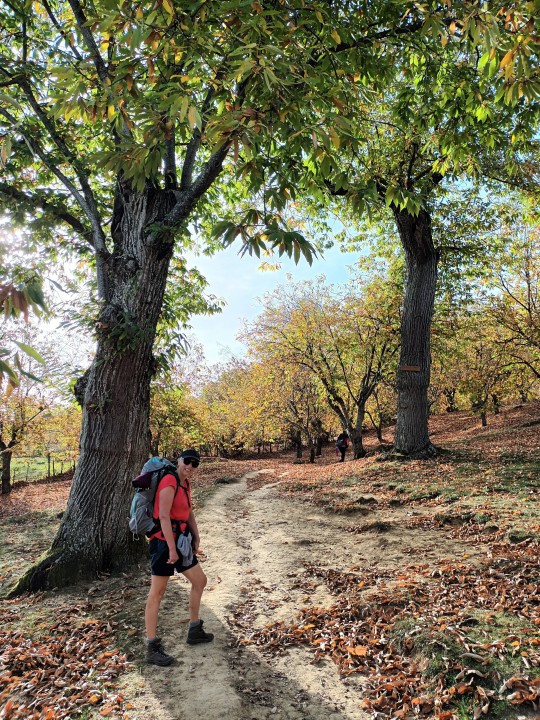



The 'Castagneti' (chestnut groves) are a significant cultural landscape in the hills and between the Po Valley and Tuscany. The chestnut plays an important part in the cultural identity of the local people as they have been cultivated here for centuries.
The trees were called 'bread trees' as the nuts were processed into flour to make bread. Castagna wood is a high quality timber and a beer is made from chestnut honey. The groves also yield mushrooms.
I was fortunate to spend some time in one of these groves. The older trees were enormous and younger ones were being coppiced from old stumps. As a sustainable source of staple food, as well as such beautiful place to be in, I felt inspired by the Castagneti.
1 note
·
View note
Text
Parma, Italy
Effective story telling is very important in community agroforestry projects. Unlike a vegetable garden or orchard, food forests can be challenging to understand or 'read'. They are such novel projects that most people are unable to distinguish them from other treescapes.
I thought the signs at the Picasso Food Forest in Parma were exceptional. To me the graphic designer got the balance right between words and images. The imagery is very effective at capturing your attention.
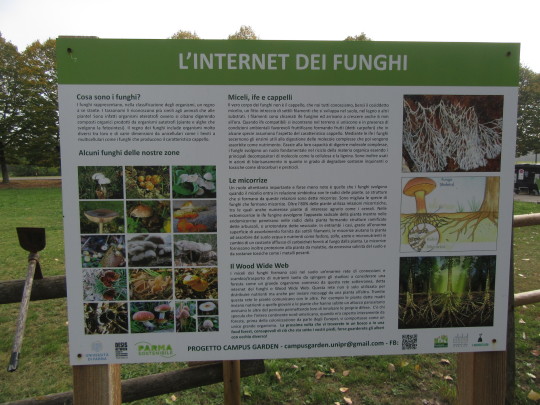




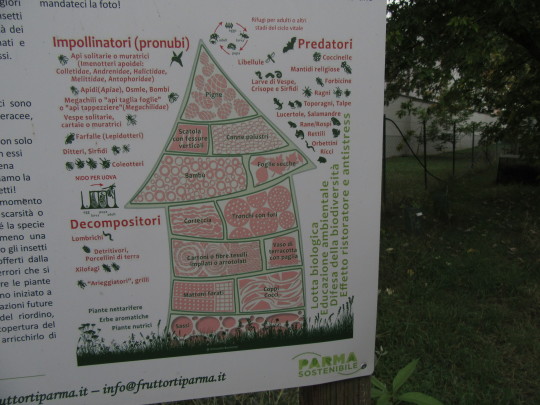
3 notes
·
View notes
Text
Parma, Po Valley, Italy.
Thrilled to have visited Picasso Food Forest and to have met the founder Francesca Riolo, and her colleague Eric Franc. This site is believed to be Italy's first public food forest, established in 2012.
It is quite a feat given that Parma is a prosperous conservative agricultural town famous for its prosciutto (cured meats) and Parmigiano Reggiano (parmesan cheese). However, this prosperity has come at great cost to the environment with the city having some of the worst air pollution in Europe and the local waterways trashed with animal effluent and waste.
Francesca was a superb host, showing me other local food sites as well as taking me to the nearby Tartuffe (truffles) festival and various bars and cafes.






3 notes
·
View notes
Text
Rotterdam, NL
I spent a week here investigating ten community food forests sites. Thrilled to meet the team from Coöperatie Ondergrond and see their projects. This group is a 'cooperative of social entrepreneurs' who are creating sustainable urban livelihoods whilst creating a network of food forests across the city.
For a team of five their work is impressive. Sixteen urban community agroforests created to date. Sites include botanic gardens, schools, artist residences and underused greenspaces. Projected 2022 budget of 250,000 euros (AUD $400,000).
The Netherlands is powering on with agroforestry, with edible forest gardening becoming a popular concept.
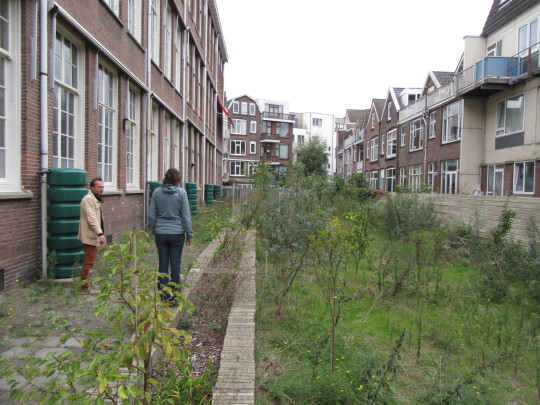

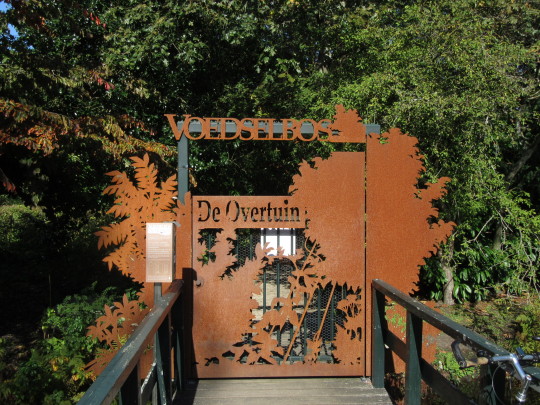
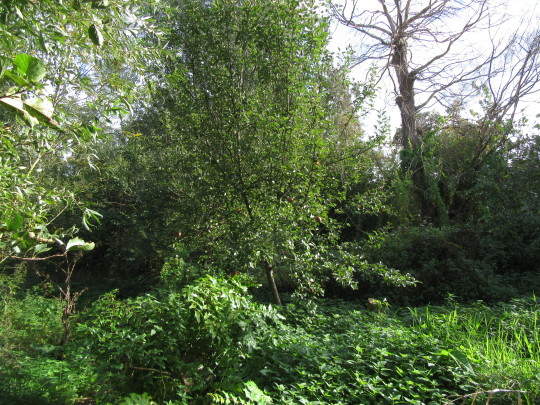



2 notes
·
View notes
Text
Rotterdam, NL
The Biomeiler at Voedseltuin community garden. This simple but effective green tech uses the energy generated from decomposing wood chips for hot water and building heating. The wood chips come from the city's tree prunings, an abundant resource.
This 100 cubic metre system generates 3 to 5 kilowatts of heat. Here the system provides power to the adjacent canteen. When decomposition ends the resulting compost is used in the gardens. A zero waste heating solution that has application in Australia.





5 notes
·
View notes
Text
Royal Orthopedic Hospital, London
An excellent day harvesting apples from the hospital's orchard. This event was organised by The Orchard Project (TOP), a national charity dedicated to growing the Community Orchard movement across the UK. They currently employ 17 staff who help communities design, implement and maintain public fruit trees. TOP runs accredited courses in community orcharding and forest gardening which are very popular.
On this day our small group harvested 552kg of apples that will be used to make cider. It was a fun event, lots of laughs and stories between the harvesting, with a delightful picnic lunch as well!



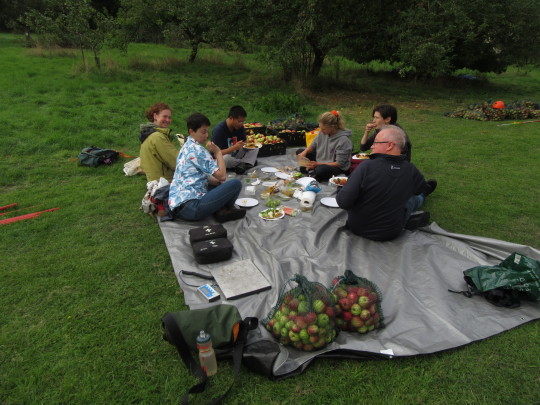

3 notes
·
View notes
Text
Bethlem Psychiatric Hospital, London
Who would of thought this place has an eighty year old orchard with 200 apple trees! Another beautiful community food place, in this case, right next door to a medium security unit and mental health facility. The Orchard was forgotten about for decades until someone spotted a couple of apple trees above the tangle of brambles and weeds below.
I met with Peter O'Hare, the head of occupational therapy, a delightfully jolly Irishman. Peter saw a therapeutic need for the orchard, and walled kitchen garden, when clients started asking for time outside. And so programs have been developed for folks with major challenges to connect with nature, cultivate confidence, and learn new skills via activities in the orchard and gardens.
Apple harvests, tree maintenance, pressing for juice and making preserves are just some of the activities. Produce is sold via the hospital shop, and local residents nearby can enjoy the Traditional Orchards Nature Trail.
This is a exemplar of horticultural therapy, repurposing a lovely old orchard and garden. The potential application of this approach in Australia, likely with new plantings, is enormous!



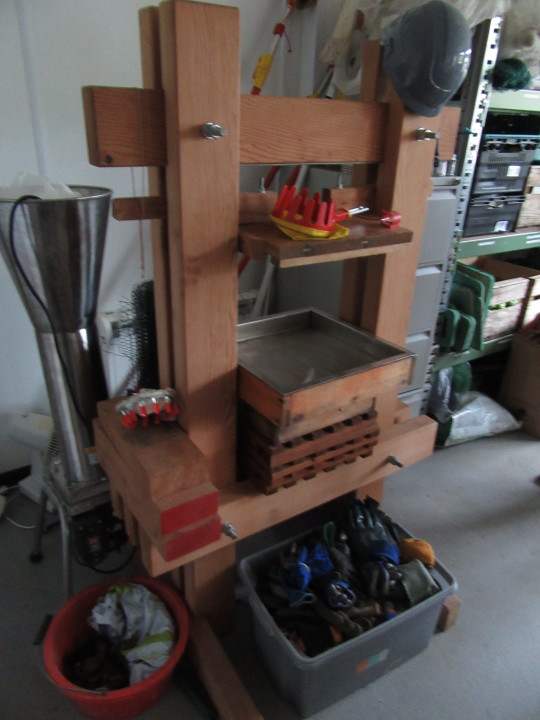

2 notes
·
View notes
Text
Agroforestry Research Trust, Littlehampton site, Devon UK
This massive glasshouse hosts a subtropical food forest! It is a research project to understand potential food crops in a future hotter climate as a result of climate change. Designed by Martin Crawford the temperature is set to 5 degrees above the current area average. Sensors automatically open and close roof vents and air mixers. A soil heat storage system keeps the ground temp above 2 degrees all year round (this is an area that freezes in winter). Plants include bananas, guava, avocados, figs, New Zealand spinach, Okinawa spinach, tumeric and dwarf tamarillo.


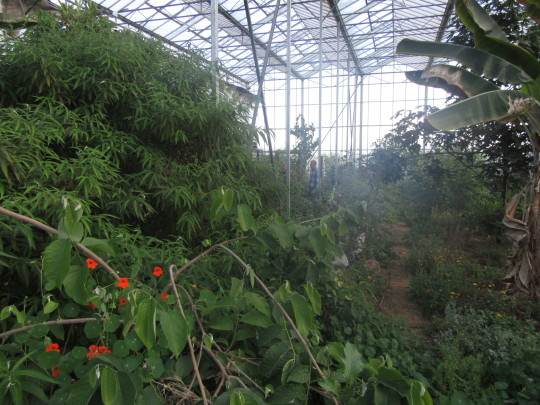

3 notes
·
View notes
Text
Agroforestry Research Trust, Dartington, UK
Thrilled to spend time soaking in Martin Crawford's wisdom in one of the world's oldest temperate zone food forests. This 2-acre site was established in 1994 and yields copius quantities of fruit, vegetables, nuts and mushrooms. This tour is part of Martin's edible forest gardening course.
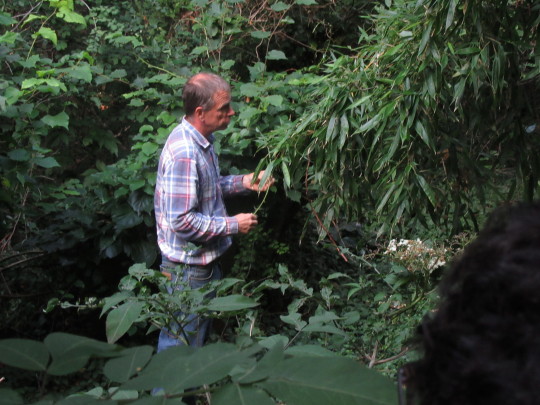

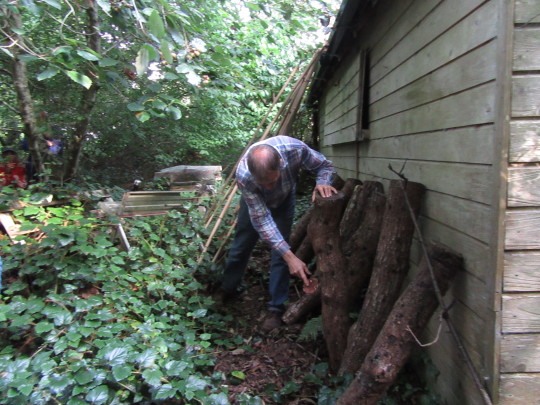

3 notes
·
View notes
Text
Philadelphia, USA.
This week was one of orchard inspiration with the team from the Philadelphia Orchard Project. This not for profit provides orchard establishment and care services to schools, urban farms, community gardens, universities, health centres, heritage places and places of worship. Since 2007 they have established 67 community orchards throughout the city.
POP's headquartered 'Learning Orchard' recently established in 2019 provides educational outreach to their partners. It's an excellent example of integration and activation of underused green space as it is located within the grounds of a historic cemetery. POP's offices are also located here.
The learning orchard is also a potent example of how orcharding can be interpreted. In this case an alley cropping system has been integrated amongst the tree rows to increase production before the trees start to bear fruit. This is also COVID response with all produce going to people in need.
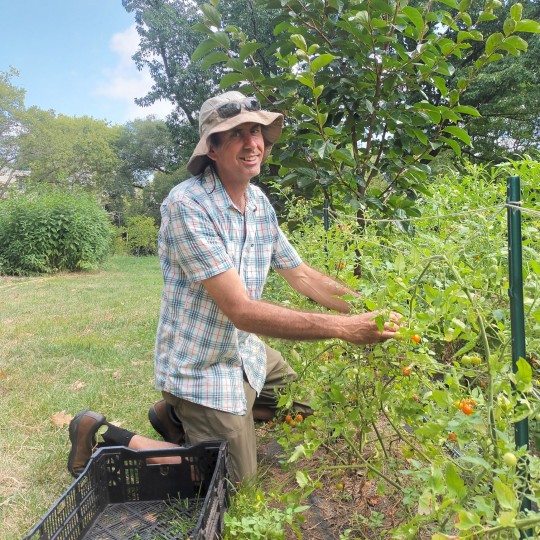
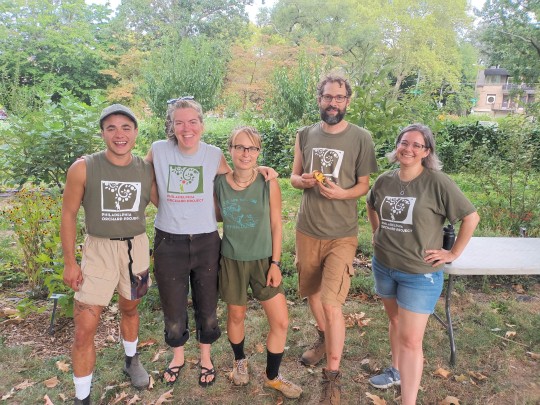



5 notes
·
View notes
Text
Bowie, Maryland, USA.
Totally thrilled to have finally met these two leaders of America's food forest movement. Catherine Bukowski is lead author of the Community Food Forest Handbook (I now have a signed copy!). Lincoln Smith is the founder of www.forested.us/, a pioneering enterprise that educates and inspires about forest-based agriculture.
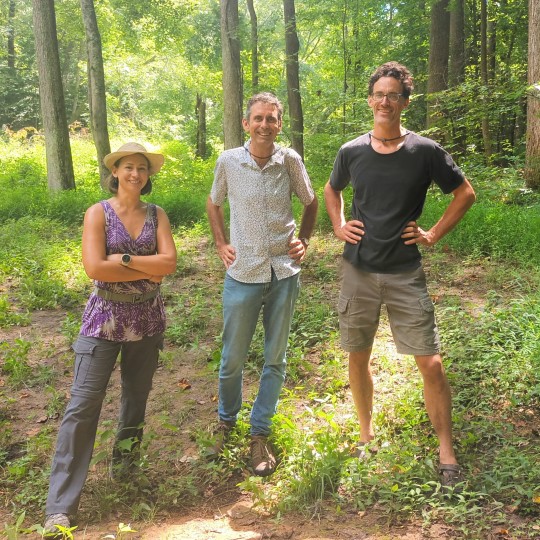

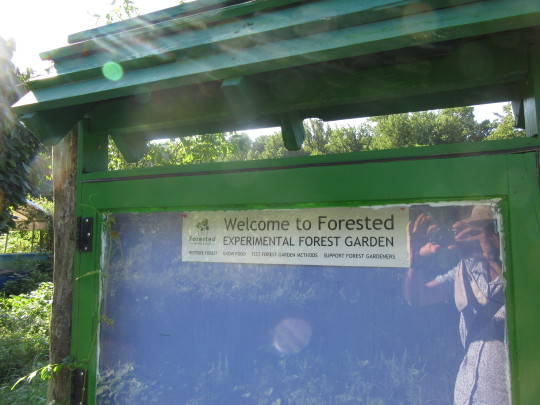

4 notes
·
View notes
Text
The Tropical Fruit Pavilion at Fairchild Botanic Gardens, Miami. June plums, Jack fruit, Bread fruit, Mangosteens, Cacao, and rare Mango varieties. Would be good to do this in Oz!




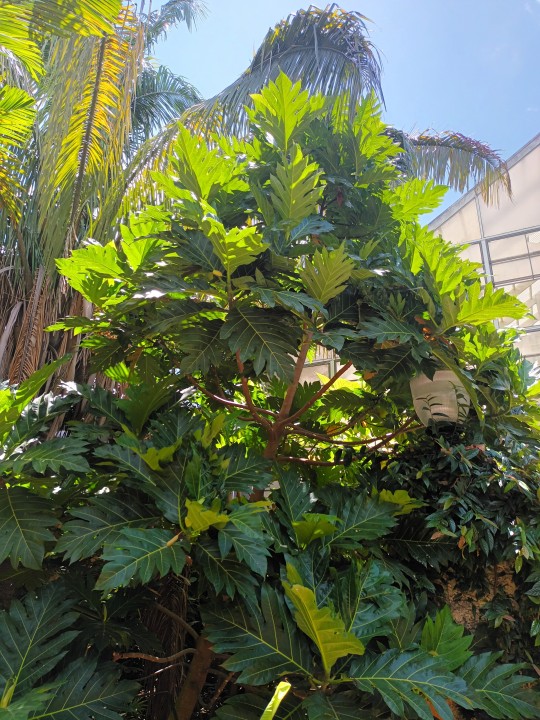
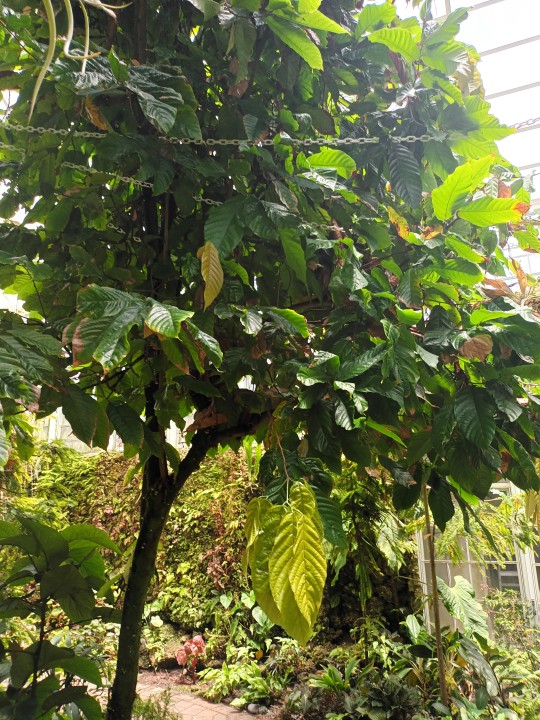

#fruit trees#tropicana#tropical fruits#botanical#botanical garden#gardening#food forest#food security#agroforestry
23 notes
·
View notes
Text
I love epiphytes! In tropical Australia we have Staghorns, Elkhorns and Crow's Nest Ferns growing in trees. In the tropical America's it's bromeliads, including pineapples(!!), filling the same ecological niche. Incredible to think pineapples are actually a tree dweller in their natural habitat.




14 notes
·
View notes
Text
Miami, Florida. The 'Food Forests for Schools' program is a ground breaking initiative that to date has installed edible forest gardens in 28 elementary (primary) schools across the Miami-Dade county schools board district. This includes the USA's first food forest in a school at Twin Lakes Elementary.
In the gardens the children learn about nutrition, medicinal plants and culturally important foods. They take home produce to their parents and grandparents, and the gardens supplement school lunch meals.
Maths and science is also taught in the outdoor classroom spaces integrated into the garden. The lesson plans have been approved by the district schools board. The participating schools have recorded significant improvements in students' performance in math and science after switching to learning in the gardens.
Thanks so much to The Education Fund - Miami for hosting me this week.


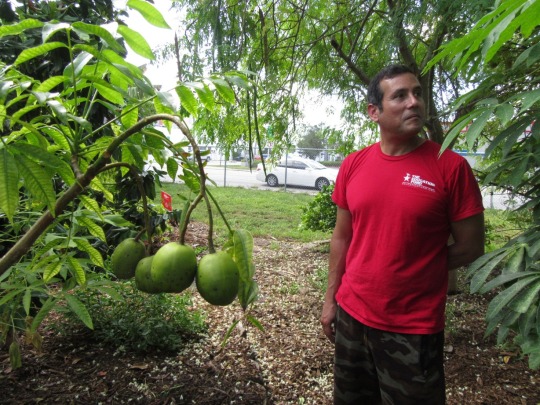


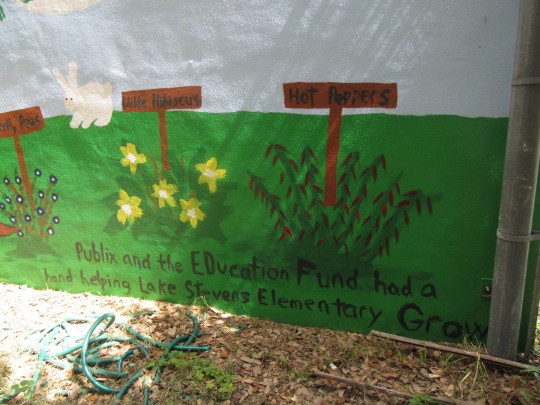

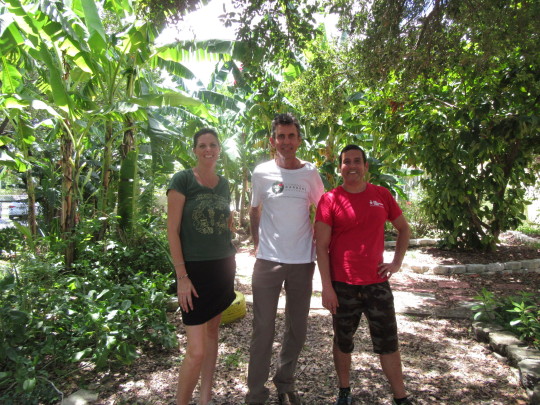
98 notes
·
View notes
Text
Victoria, British Columbia, Canada.
Had a couple of days picking and sorting plums and apples with the team from Lifecycles Project, a local food not for profit. This amazing group has developed an innovative self managing volunteer system where local residents help other residents harvest fruit trees in back yards and public places.
Last year they picked almost 80,000 pounds (36 tonnes!) of fruit from Victoria's 'urban orchard'. Admittedly, 2021 was a good year in this region for yields, but in an average year 15 to 20 tonnes are picked! Remarkable.
They've cleverly built in a system of reward where the 'tree steward' (that is, the land owner), and the harvest volunteers and sorters get 50% of the harvest. The other 50% goes to food banks and community kitchens, and the lower quality fruit gets made into ciders, preserves and the like available for sale.





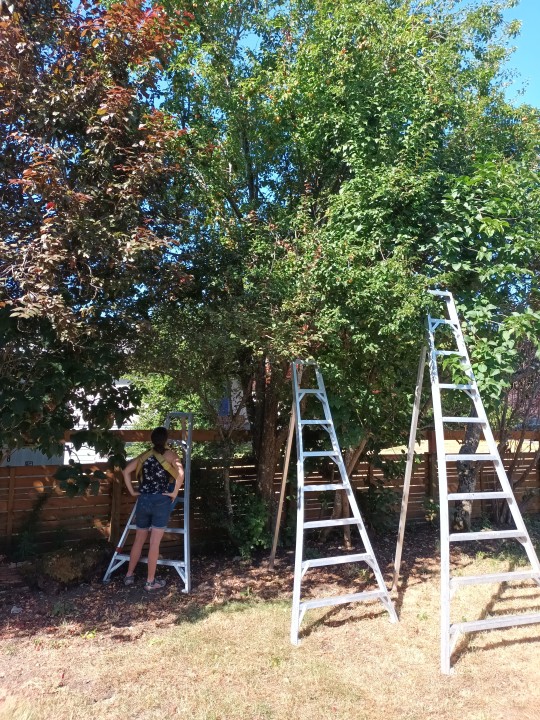
6 notes
·
View notes
Text
Seattle, USA. I've just put together this short video on the community design process at Beacon Food Forest with cofounder Glenn Herlihy.
youtube
3 notes
·
View notes